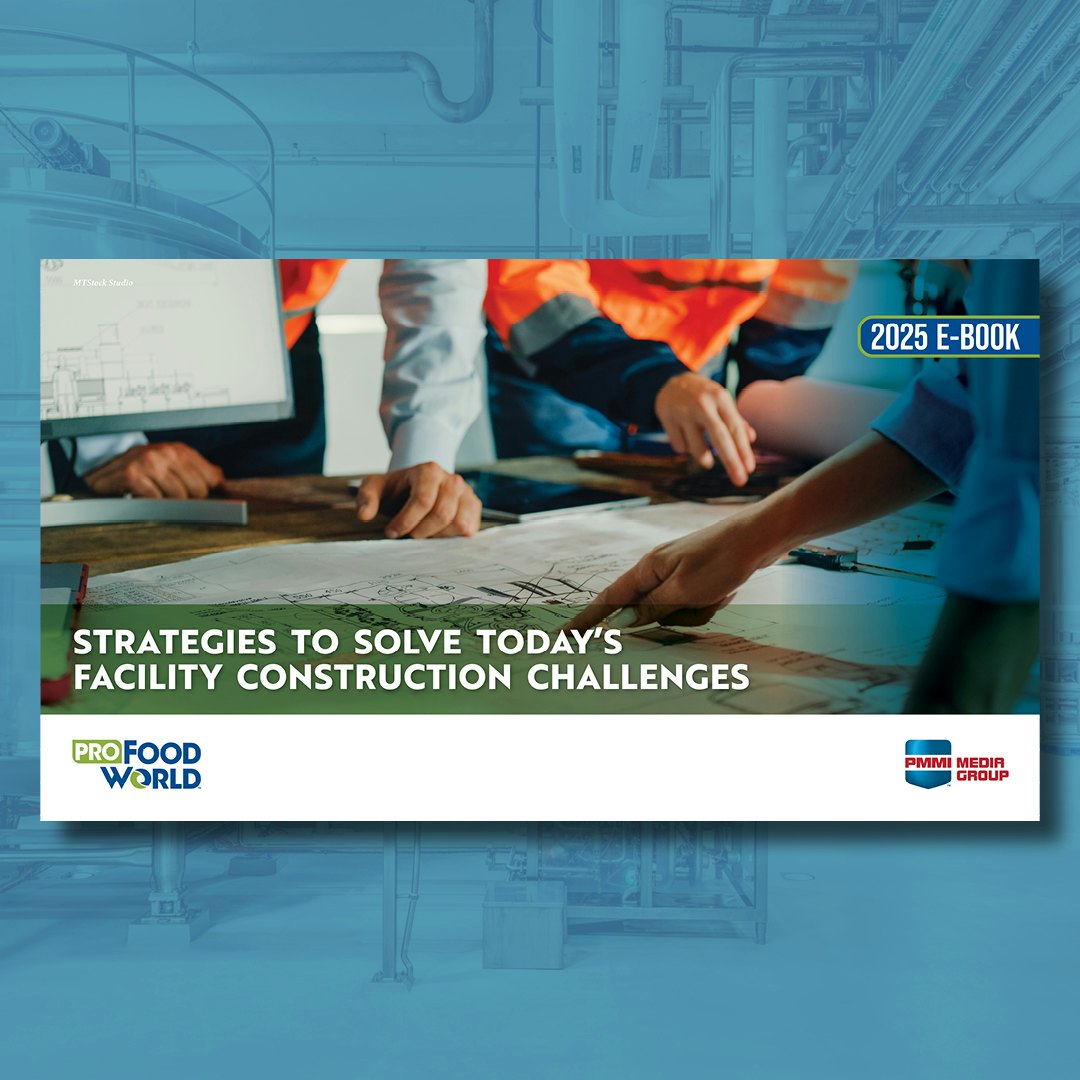Faced with more stringent regulatory requirements while continuing to strive for improved efficiencies has batch process manufacturers trying a variety of automated approaches to improve ingredient management. Many process manufacturers view tighter integration of enterprise functions with manufacturing execution systems (MES) and automation layers as the ultimate endgame for better management of raw materials and finished products.
In the pharmaceutical industry, enterprise integration and seamless production means continuous processing technology. Advocated by the Food and Drug Administration (FDA) in 2013, this manufacturing approach allows for a “finished drug product to be produced in a continuous stream, as opposed to a series of ‘unit operations,’ such as milling, mixing, granulation, and so forth.” Theoretically, drug production can be continuous from chemical synthesis of the active ingredient through production of the tablets or other dosage form, according to the FDA.
The pharmaceutical-based British Technology Strategy Board created a pilot project in 2010 that involved GlaxoSmithKline, GEA Pharma Systems and Siemens. The project executed oral solids dosage (OSD) manufacturing that includes extended changeover times, disconnected processes, low asset utilization and a long approval process before a batch can be released.
“It was not just a matter of granulating the powder and making a tablet, but—more importantly—generating the information that goes with the tablet to enable real-time release (approval) of the finished product,” says Jan Vugts, managing director of GEA Pharma Systems.
This project implemented SiPAT process analytical technology (PAT) software from Siemens to collect performance-related process parameters, such as a loss on drying or particle size distribution, according to the British research body. A key component was communicating process data to the MES for real-time reporting. A Simatic IT Report Manager produced these process data reports, conforming to 21 CFR11 standards, and provided real-time analysis for quality control.
“The amount of quality-related information that is available now on each tablet is huge,” Vugts says. “Up to now, we knew that a batch was good, but now we can say every tablet is good.” This successful continuous processing project revealed a window of less than two weeks to develop a production process for a new tablet.
Momentum is gaining for PAT. Vertex Pharmaceuticals is now building a $30 million, 4,000-square-foot continuous manufacturing facility in Boston in anticipation of approval for a new cystic fibrosis drug, according to a report from Fierce Pharma Manufacturing magazine. GlaxoSmithKline, Novartis and Johnson & Johnson are also reportedly moving toward commercialization applications.
Pharmaceutical continuous processing is at a transformative moment and installation will take massive investments. However, other process manufacturers are taking different approaches to continuous improvement and better repeatability when it comes to ingredient and raw material management. The ISA-88 framework is providing guidance for legacy plants and more mature industrial networking is enabling disparate control platforms and enterprise systems to connect.
“We’ve got to keep in mind that there are several approaches—a top-down or a bottom-up approach for customers,” says John Parraga, product manager at Rockwell Automation. “Customers need a clear interface between platforms and adhering to standards, such as ISA-95 for MES. These have helped processing applications become more productive and efficient across the enterprise.”
For example, Slovakia-based Saneca Pharmaceutical, a formulation specialist, recently updated its Simatic PCS7 control system and added batch control software for the production of active pharmaceutical ingredients (API). The drug ingredients are produced periodically throughout the year, and Saneca Pharmaceutical wanted more flexibility to be able to move to production quicker.
Compas Automation, a system integrator and MES supplier, removed the drug manufacturer’s fixed programmed algorithms for a specific product and migrated to a multi-product system with simultaneous control workflows for several product batches.
The MES platform, based on ISA-88 standards, allows operators to modify the master recipe now, and set procedures and parameters while including an electronic batch record (EBR) of these changes, according to Saneca. There also is an option to generate production reports through defined templates and data from a historian.
This initial plant upgrade expanded to include the MES connecting to the drug manufacturer’s SAP enterprise resource planning (ERP) system for tighter control of raw materials.
Legacy connections
According to some industry analysts, the pharmaceutical industry is moving faster than other process industries, particularly because of the FDA’s recent Drug Supply Chain and Security Act. To be phased in over the next 10 years, the 2013 rule requires manufacturers to provide full traceability of products from the plant and through distribution.
 |
|
The F&N Dairies Rojana plant adopted a top-down solution to improve on quality metrics and production efficiencies for an operation that produces more than 2,500 cans of milk per minute.
|
Dublin, Ireland-based Mallinckrodt Pharmaceuticals is one of those process manufacturers that has taken a bottom-up approach to increase plant utilization and meet regulatory mandates by updating a legacy control platform at its 40-acre active pharmaceutical ingredient (API) plant in St. Louis, which produces many ingredients for narcotics and other final salable products. Mallinckrodt recently updated one of its drug ingredient process facilities to Rockwell Automation’s PlantPAx process automation system, which also included FactoryTalk Batch and Historian software.
“Before the upgrade, we didn’t have a true batch system,” says Don Geers, senior maintenance engineer for Mallinckrodt Pharmaceuticals. “Our previous processing method electronically captured data and automatically created what we called a digital batch record. However, it wasn’t electronic as far as 21 CFR Part 11 is concerned.” The older platform would store these batch records in an Oracle database.
Like many pharmaceutical processing applications, there are multiple steps in the formulation process—done in different facilities connected by train tracks at Mallinckrodt. The trains carry drug ingredients in different process stages, such as liquid formulation in one building to pure powder when it moves downstream to the next building.
“We may have up to three batches on any particular train,” Geers says. “As one part of the batch finishes, such as purification, a train will take it to drying and another batch can now start purification.” For instance, this upgraded facility receives drug in liquid form via the trains and then decolorizes, purifies and reduces it to a concentrated powder. From there, it’s packaged into drums.
The train cars travel up and down the tracks to processes controlled by a variety of platforms. An Emerson Delta V system is found upstream, for example. These disparate control systems communicate via industrial EtherNet/IP, with master and slave setups. Control systems recognize batches and their stages from a batch ID number.
With multiple batch steps running continuously, this new batch system now captures data when a batch is completed, called store and reset. After completion, an operator produces a paper batch record, with help from Microsoft’s Reporting services. The system also generates an electronic PDF version for those finished batch records for recall, if necessary.
This project also included new graphics for the HMI operator terminals and provided Mallinckrodt with an opportunity to improve on its Right First Time (RFT) quality metric. “Whenever the operator has to enter data, it’s always on the HMI,” Geers says. “Process data for the batch record is also captured and displayed on the HMI.”
For the HMI update, 140 screens of process graphics were redrawn and exact paper batch records were implemented onto terminal screens. “The operator handles no paper (for data entry) at the HMI, unless it’s a lab result that needs to be entered,” Geers says. “The input component is where we minimize our errors, and so that’s been good.” This batch facility, in particular, has a current RFT yield of 98 percent.
With more traceability expected, the three-year migration project at this facility also has included development of common programming standards for the enterprise to leverage. The Mallinckrodt plant in St. Louis, like many legacy operations, is implementing strategies to allow data to travel faster throughout the enterprise by moving to common platforms.
“We wanted to have a common programming standard that all of our buildings would use and so we developed a standard with our local system integrators and Rockwell Automation,” Geers says.
Mallinckrodt validated the programming standard for this project, and the drug manufacturer can apply it to other plant buildings. “Once it’s validated, then you take the standard and use it as many times as you need it,” Geers adds.
Common platform
As the pharmaceutical segment drives quickly toward holistic solutions for traceability and efficiencies, the food industry is also moving to systems based on ISA-95 and ISA-88 standards. Some food manufacturers, such as Procter & Gamble and Nestlé, have adopted a massive top-down strategy. Others are still struggling with disparate control platforms because of mergers and acquisitions.
F&N Dairies (Thailand) recently adopted a common platform strategy at its plant in Rojana, where it produces more than 2,500 cans of milk per minute. The food processor needed a platform that could connect automation devices, information management systems and lab measuring instruments to achieve consistently high product volumes.
 |
| Thailand’s food and beverage regulations require quality documentation be kept for the duration of a product’s lifecycle. The shelf life of F&N’s canned milk is up to two years. |
System integrator Sagitate collaborated with Wonderware Asia-Pacific to create the MES for F&N, under the project label of Process Nexus II. The complete upgrade included Wonderware InTouch, InBatch, MES, historian and QI analyst software from Schneider Electric.
Before the new platform was implemented at the Rojana plant, operations had to log plant production data via paper reports. Process parameter deviations caused major delays because it was difficult to find root causes quickly, according to F&N Dairies. “Now, we are able to collect product traceability in real time, both upstream and downstream of our batch processing operations,” says Sitthichai Sribunyapirat, F&N production manager.
There can be up to 40 reports per day for raw material receivables, process control, filling, packaging or cleaning operation control sheets at Rojana. “It was difficult, time-consuming and easy to make mistakes during the review of parameters,” says Watcharapong Boonnam, quality manager at F&N. Before the data acquisition platform, one traceability exercise could take up to four hours; that has been reduced to one minute for minor production process deviations.
Traceability is important to F&N, but so is real-time data acquisition for process metrics, such as net content control that measures product net weight and product loss. HMI screens display captured net weight data, enabling F&N operators to calculate overfill in real time.
The new platform also helps F&N work with Thailand’s regulations in a much quicker fashion if a recall is necessary. Food and beverage regulations require quality documentation be kept for the duration of a product’s lifecycle, which is a big deal considering the shelf-ready, canned milk at Rojana can last up to two years.




















